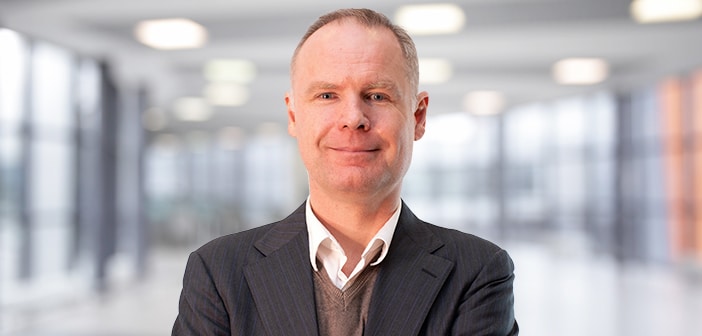With 5G at the centre of mobile operators’ strategies, the challenge is to avoid another cycle of intense infrastructure investment which enables the business cases of other organisations. Instead, operators need to take up a new role that monetises the enablement they provide and places them in the connected ecosystem as more than the providers of connectivity.
The opportunities are complex and numerous and operators need to navigate carefully, Erik Meijer, a strategy executive in the Group Innovation unit at Deutsche Telekom who also sits on the advisory board of TM Forum, tells George Malim in an interview at this year’s Digital Transformation World in Nice, France.
“In the Forum and at Deutsche Telekom we want to get business and IT executives together to really define business cases for 5G,” he says. “In 5G substantial investment is required up front so you need a laser-focused approach [to selecting opportunities]. Low latency gaming, for example, has a clear business case because consumers will pay a premium for it while, in the business-to-business (B2B) market, connected campuses for large companies will see them have their own private networks for automation, robotization and network slices for the monitoring of machines. This is much more interesting than just connectivity.”
“We talk about the platform effect,” he adds. “The top companies are platforms and we, as the telecoms world, need to get our heads around that or we’ll be building 5G for another over-the-top (OTT) optimisation attempt. B2B2X models need to be visualised.”
He says Deutsche Telekom has recognised the need to build an agile organisation as a defence against OTT providers. By doing so opportunities will emerge that telecoms operators are able harness, participate and generate revenue from. He gives the examples of smart parking and ticketing as immediate areas in telecoms can from part of the ecosystem. “Ticketing is a huge opportunity,” he says. “For venues, we can support security buy assuring that the person has the right ticket with the right code. Beyond that, you can add a public transport ticket to the event ticket, for example. These are our platform plays where we can solve multiple problems for multiple businesses in one go.”
5G brings new capabilities and, while Meijer acknowledges the technical complexity of deploying 5G, he identifies the cultural shift it requires as a greater challenge. “With new millimetre wave technology, small cells, massive MIMO, beamforming and uplink and downlink at the same, you can’t do 5G as you do it now,” he explains. “This means a new approach to innovation.”
Meijer sees the traditional structure of developing products and services in carefully structured processes starting to change as the innovation environment changes. He cites the transformation of T-Mobile USA, led by chief executive John Leger, who has successfully piloted the operator’s un-carrier strategy based on experience gained working from the companies’ call centres to truly understand what customers want. Meijer says Leger claims he got his best information from call centre workers during their smoking breaks.
The insights that drive the next wave of mobile services will come from similarly leftfield sources and old rules will no longer apply. Therefore, operators must learn to redefine their approach to both market and technical research. Meijer thinks this will also stimulate employee enthusiasm for new projects.
“If you’re trying to attract people to this one way is to say: I have an expedition in mind, do you like this mountain? If so, you can be the sherpa,” he says. “However, if you’re the sherpa, I’ll finance the mission but you’re responsible for the backpack. These sherpas won’t be leading teams but they will be leading the mission.”
Meijer envisages responsibilities shifting fluidly across innovation teams. Sometimes workers will be mission leaders, sometimes participants. “We look at the whole picture from an ecosystem perspective,” he says. “The good news is everyone is getting it.”
As the next generation of employees enter the work place, Meijer foresees a more collaborative innovation environment emerging. “If you get young people in the office, they’re born in IT and they have a very nice exchange of ideas, they also have big networks and usually know someone who can solve a problem. They really live it and people have a good sense if you’re faking it.”
That collaborative imperative extends externally into how operators will interact with customers and partners. Taking a concept such as servitisation of a machine from a one-time physical goods purchase into a subscription service is an area of great potential. “We’ll work with partners and look at some business models and discover new areas,” he says. “If a customer only wants to pay for an engine while it is use but the engine-maker doesn’t have the ability to send bills for that, this is an area where we can help and participate. This cross-section can work well but it is uncharted territory.”






